The obvious yin to the yang of this summer's Viking boat course would obviously be Japanese River Boat building. So it was off to Seattle after a river trip. Here's Rainier from the window of the flying machine.

I drove due west and found space aliens inhabiting the Pacific Ocean.
And a stump-eating monster.
Here is the world's largest Sitka spruce. There are a lot of nice oars inside of this, but I hope they stay there.
A big ol' cedar tree.

There's something about the ocean shore that pulls at the heart.
What a fun word to say, especially without engaging your vocal cords.
Here is the Elwha River, rapidly recovering from its former dam.
The first thing I ran into at the Northwest Maritime Center was another of Jay Smith's Viking faerings. Small world.
Suriawase. (Su-ree-AH-wah-say) Sawing between boards over and over until the fit is practically airtight.
By the way, his book on Japanese Boat Building is amazing, as are his adventures. Check him out at Douglas Brooks Boatbuilding.
Once the floor planks are fitted we have to edge-nail them together. Which involves chiseling many beveled notches.
And many pilot holes.
Once the nails are in, we plug the notches, then chisel in little bow-ties to make sure things never come apart.
Riley, who runs the programs at NMC, makes us a bunch more nails.
BFNs. Big Flat Nails.
The beveled ends of the floor get splined on and braced in place.
Heaviness in the center gives it a bit of rocker.
A Shinto blessing of the hull.
More suriawase as we begin building up side boards.
What a wild way to make a really wide plank.
As I did this spring on the faering, I get sidetracked into making another truly weird oar. This boat only gets one oar. It has a big cross-grip for sculling.

We put the sides in place. The Japanese use few clamps, but many props and wedges.
More suriawase.
Once the fit is near perfect we spike the sides on with Riley's BFNs.
More fun joinery as we put in seats and thwarts.
Cleaning up the bottom.
Gunwale caps and end blocks in place, and we're calling it done.
Note the oar notch in the stern for sculling.
A dedication with salt and sake.
Douglas demonstrating the sculling process. I tried it as well but had to sit down or fall down. I need a bit of practice.
Here is a Shinano boat with a bit of rice in it.
Much like the Viking faering, I don't think I really need a Shinano River boat for Grand Canyon. But I am certain the physical and processes we engaged in will color the way I do things back in the boat shop.






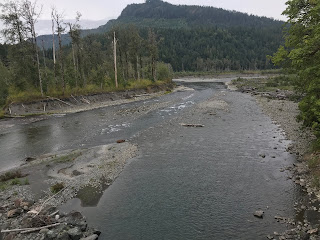










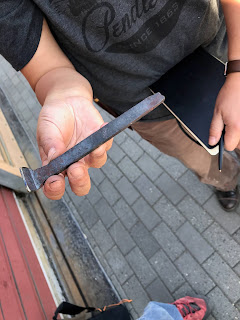
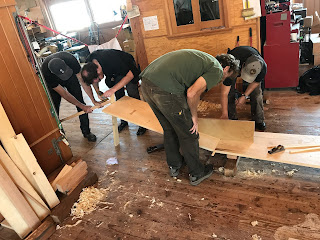
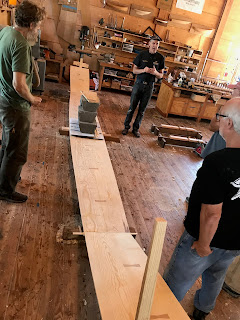








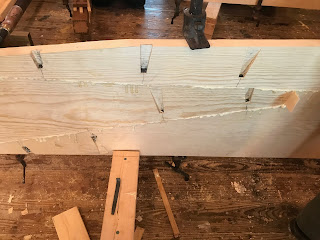





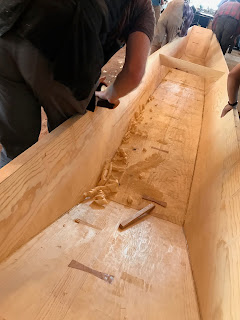










No comments:
Post a Comment
Note: Only a member of this blog may post a comment.